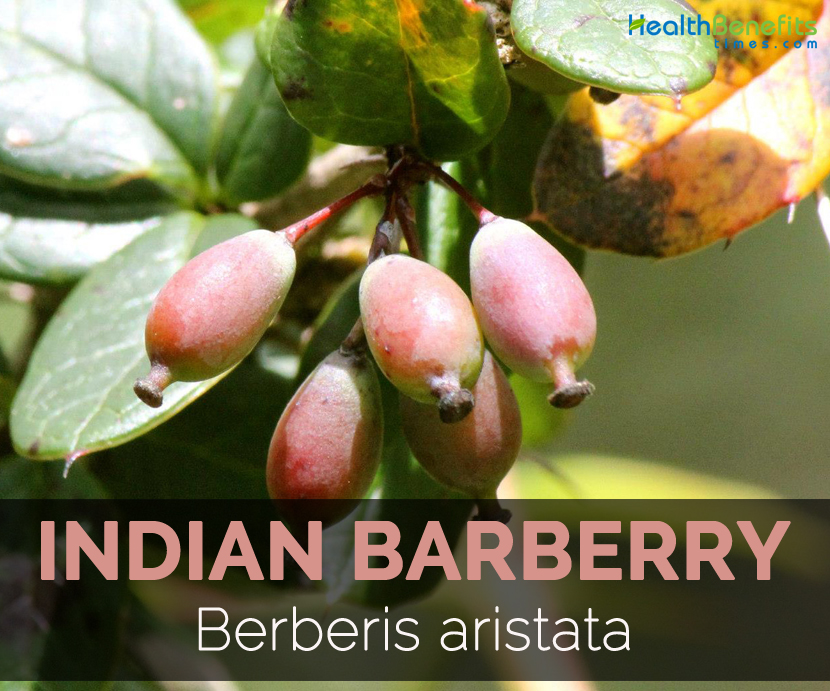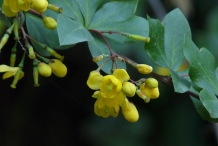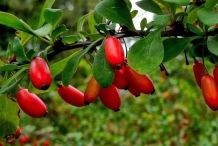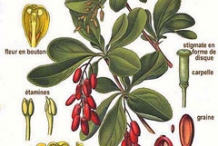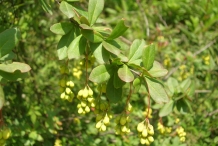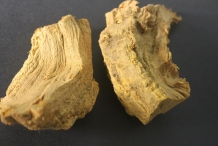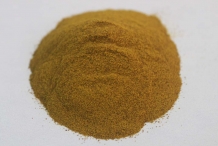It is an erect, glabrous, spinescent and evergreen shrub growing upto 2 and 3 meters high. The toothed leaves are 4.9 cm long; 1.8 cm broad, simple, pinnate and deep green. The leaves are obovate-elliptic and subacute-obtuse. Flowers are yellow, hermaphroditic which is 12.5 millimeters in diameter. The fruit is an oblong-ovoid or ovoid berry which is 7 millimeters long and 4 millimeters in diameter. Every fruits contains 2 to 5 seeds whose color range from yellow to pink. The fruit is aconite violet in color which has plum purple flesh. The fruit is succulent and has acidic to sweet taste.
Health Benefits of Indian Barberry
Since long time ago, Indian barberry has been used in Ayurvedic medicine. It possesses antifungal, antibacterial, anti-inflammatory, antioxidant and hepatoprotective properties. Indian barberry is used as a treatment for fever, ulcer, inflammation, infections, skin problems, eye ailments, wounds, diarrhea etc. It also prevents the health conditions such as heart failure, malaria, liver disease and jaundice. It is used for both internal and external use.
- Anti-inflammation
The findings shows that Berberis aristata possess an anti-granuloma and anti-inflammatory properties which helps to prevent pro inflammatory receptor as well as mediators in an activated macrophages. Activated macrophages and chronic inflammation plays a vital role in RA pathogenesis and inflammation ailments. The findings show that Berberis aristata helps to treat the inflammatory diseases. (1)
- Treat diabetes
The study shows that 1,000 mg berberine and 210 mg of silymarin helps to improve the glycemic and lipid profiles in the diabetic patients. Berberine and Berberol is an effective treatment for introducing an insulin therapy in patients of diabetes with suboptimal glycemic control. (2)
- Treats diarrhea
The studies shows that Berberis possess hepato-protective, cardiovascular, anticancer and antimicrobial properties. The activities such as antispasmodic, antidiarrheal and antimalarial are also explored which is effective in the herbal formulations that contains biodynamic compounds. (3)
- Type 2 diabetes
This fruit has the ability to reduce HbA1c which is vital in order to control the level of blood glucose. Additionally, this fruit helps to regulate the blood glucose which might be caused due to the activation of metabolism enzymes of carbohydrates. The fruit of Berberis could weaken the hyperglucematic state on the diabetic patients. (4)
- Treats cancer
The combination of Berberine and Curcumin has anticancer effects in MCF-7, A549, Jurkat, Hep-G2 and K562 cells. They have extreme antitumor properties. Its combination is the potential treatment for the cancer. (5)
Traditional uses
- The root bark has berberine which has antifungal, antibacterial, antioxidant and antiviral activities.
- Berberis aristata helps to treat of urinary ailments.
- Rasaunt is prepared from the plant of Indian Barberry.
- It is used as a mild laxative.
- The dried stem, wood and root bark has antiperiodic, diaphoretic, deobstruent, tonic laxative and ophthalmic properties.
- The infusion made from Indian Barberry is used to treat malaria, skin diseases, eye complaints, jaundice menorrhagia and diarrhea.
- The fruit, leaves, stems, wood, root bark and root are used to make medicines.
- It is used to treat heart failure, malaria, liver disease, heavy menstrual periods, eye infection, stomach swelling, skin diseases, diarrhea and jaundice.
- Tree turmeric is used as a treatment for wounds and burns.
- The roots help to treat ulcers, ophthalmia, urethral discharges, fevers, jaundice etc.
- The leaf buds are chewed for affected teeth for about 15 minutes.
- Paste of this herb is used externally to reduce pain and inflammation and best use of this herb is in eye related disorders.
- It treats spasmodic pain, leucorrhoea and menorrhagia.
- It possesses anticancer properties which prevents from human colon cancer.
- It is also used for constipation and piles.
- The decoction made from this herb is used as gargles for throat infections and also improves voice.
- Berries and bark helps to treat gum diseases.
- The intake of Barberry root tea is a treatment for sores, kidney ailments and ulcers.
- The douche which is made from Indian barberry helps to treat vaginal discharges.
- The decoction made with haridra helps to treat uterine inflammations.
- The external application of paste can provide relief from pain as well as inflammation.
- The paste is used as a treatment for fistula and syphilis ulcers.
- Decoction has to be used for gargling two times a day to treat gum diseases.
- Rasaut could be mixed with alum, ghee and applied in eyes to treat eye diseases.
- The grinded Rasaut could be mixed with honey to cure stomach infections.
- The decoction made from 5 gm of roots of Indian barberry and 400 ml of water treats piles.
- The decoction made from 5 gm of dried giloy, 5 gm of Indian barberry and few basil leaves should be consumed twice a day that helps to treat a chronic fever.
- The decoction made from ½ tbsp. of amla powder and 1 cup of rasaut helps to provide relief from painful urination.
Precautions
- Indian barberry is not safe for the newborn infants because the barberine could lead to the brain damage in infants.
- Breast feeding and pregnant women should not use Indian barberry because barberine could be transferred through the breast milk to the infant.
- The excessive use of Indian barberry causes the symptoms such as severe diarrhea, vomiting and excessive sweating.
- Avoid the use of Indian barberry if any reaction occurs.
How to Eat
- The fruits are added to the dessert.
- The roots are used to make an alcoholic drink.
- In India, the dried fruits are used like raisins.
- Flower buds are added to make sauces.
References:
https://en.wikipedia.org/wiki/Berberis_aristata
http://www.pfaf.org/user/Plant.aspx?LatinName=Berberis+aristata
http://davesgarden.com/guides/pf/go/153043/
http://www.webmd.com/vitamins-supplements/ingredientmono-1125-tree%20turmeric.aspx
http://www.himalayawellness.com/herbalmonograph/tree-turmeric.htm#4
http://www.101herbs.com/berberis-aristata.html
http://www.pfaf.org/user/Plant.aspx?LatinName=Berberis+asiatica
http://www.medicinenet.com/tree_turmeric/supplements-vitamins.htm
http://www.101herbs.com/berberis-aristata.html
http://www.planetayurveda.com/library/daruharidra-berberis-aristata
http://www.anniesremedy.com/herb_detail253.php
http://herbalsatt.blogspot.com/2012/09/62-daruharidra-help-for-vast-range-of.html
http://www.athayurdhamah.com/about-ayurveda/daruharidra/
http://www.evaidyaji.com/Ayurvedic/Ayurvedic%20Herbs/Daruharidra
http://herbalsatt.blogspot.com/2012/09/62-daruharidra-help-for-vast-range-of.html
Comments
comments
| Indian Barberry Quick Facts | |
|---|---|
| Name: | Indian Barberry |
| Scientific Name: | Berberis aristata |
| Origin | Native to Himalayas in India and Nepal. The plant is mostly found in Himalayas, Bhutan, Sri Lanka and in the hilly areas of Nepal. |
| Colors | Aconite violet (Fruit) |
| Shapes | Length: 7 millimeters, Diameter: 4 millimeters; oblong-ovoid or ovoid (Fruit) |
| Flesh colors | Plum purple |
| Taste | Succulent, acidic, sweet |
| Health benefits | Anti-inflammation, Treat diabetes, Treats diarrhea, Type 2 diabetes, Treats cancer |
| More facts about Indian Barberry | |
